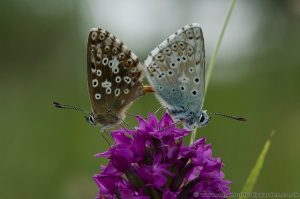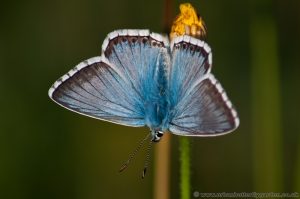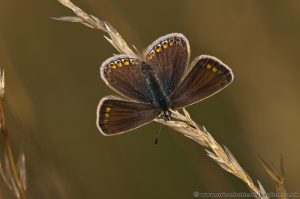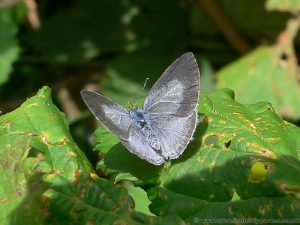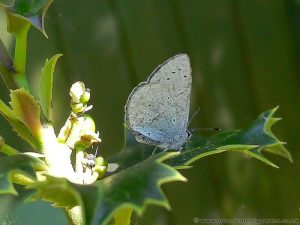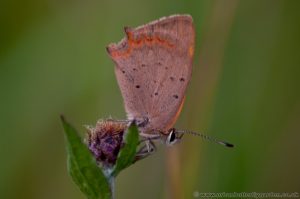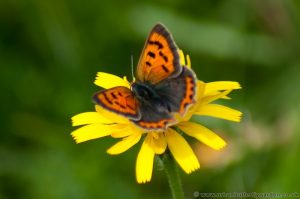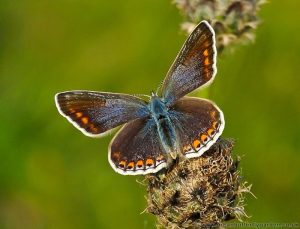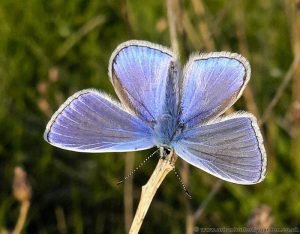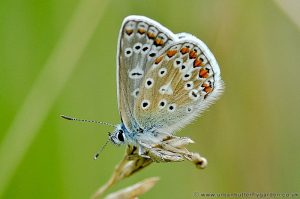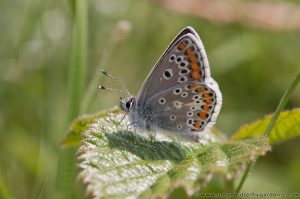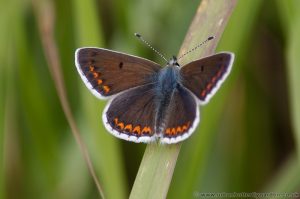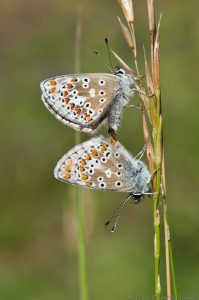Found mainly in the South East of England, on chalk or limestone (calcareous) grassland or downs, where the wild flower “Horseshoe Vetch” is growing in abundance, a native plant essential to the life cycle of the Chalkhill Blue.
Emerging Mid July to late August, the adult Butterflies may be seen on the wing in warm sunshine, in search of females or briefly resting to nectar on wild flowers. During periods of cool or overcast weather, they will often rest-up on or near the top of knapweed, grasses or other tall plant stems.
Quick Info
- Family Group: Lycaenidae.
- Subgroup: Lycaeninae.
- Wingspan: around 40mm
- Caterpillars feed on: Horseshoe Vetch (Hippocrepis comosa).
- Adult Nectar Plant: Birds-Foot Trefoil, Knapweed and others.
- Photographed: 16th, 18th, 20 July
- Location: Barnack Hills and Holes Nature Reserve.
The male has blue upper-wings with white fringes, the female is brown with orange spots. The under-wings are grey to mid brown with black spots.
The Chalkhill Blue is part of the Lycaenidae Group of butterflies, in British Isles this group of species includes:- the “Common Blue”, “Large Blue”, “Green Hairstreak”, and the smallest British butterfly the “Small Blue”, to name but a few.

